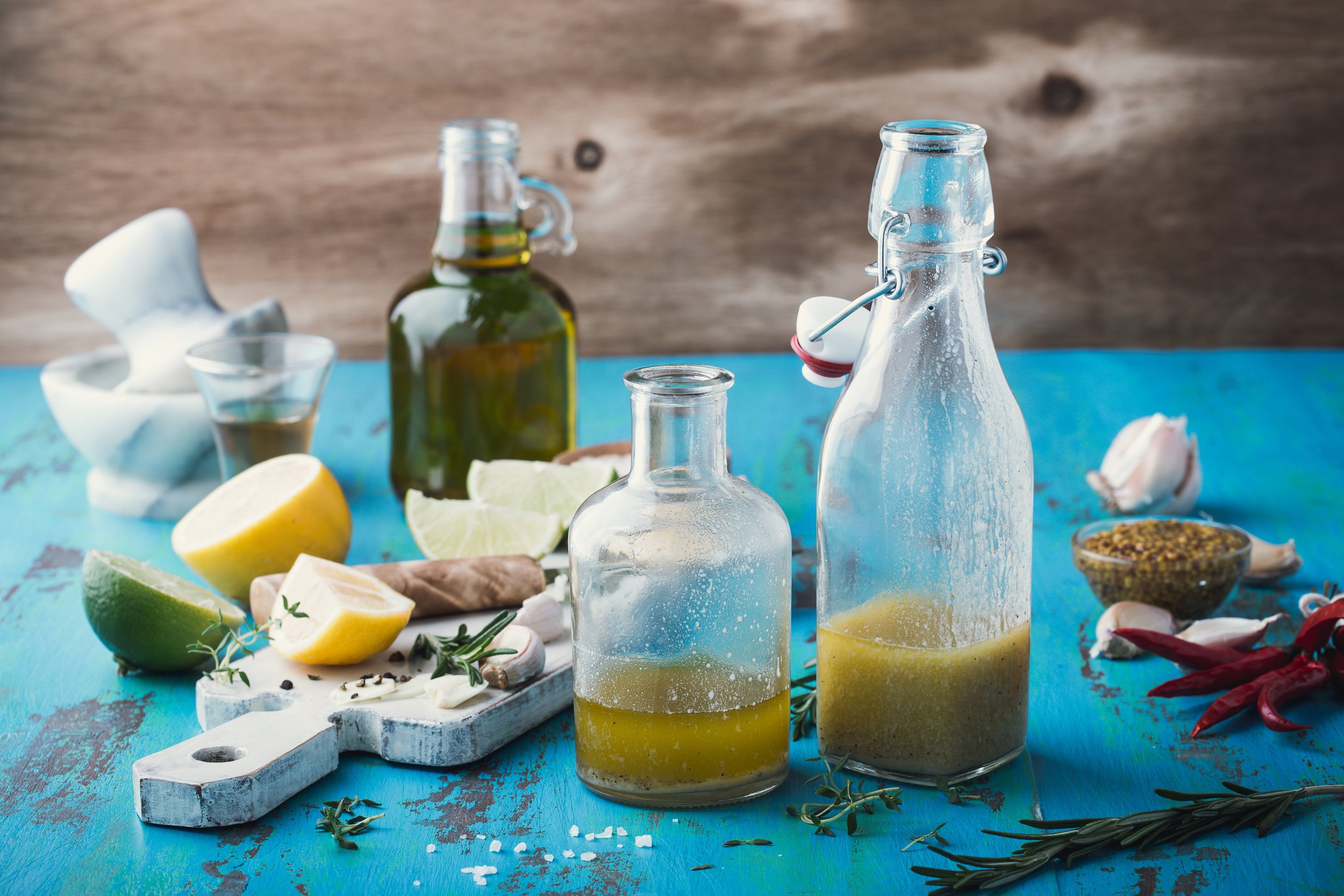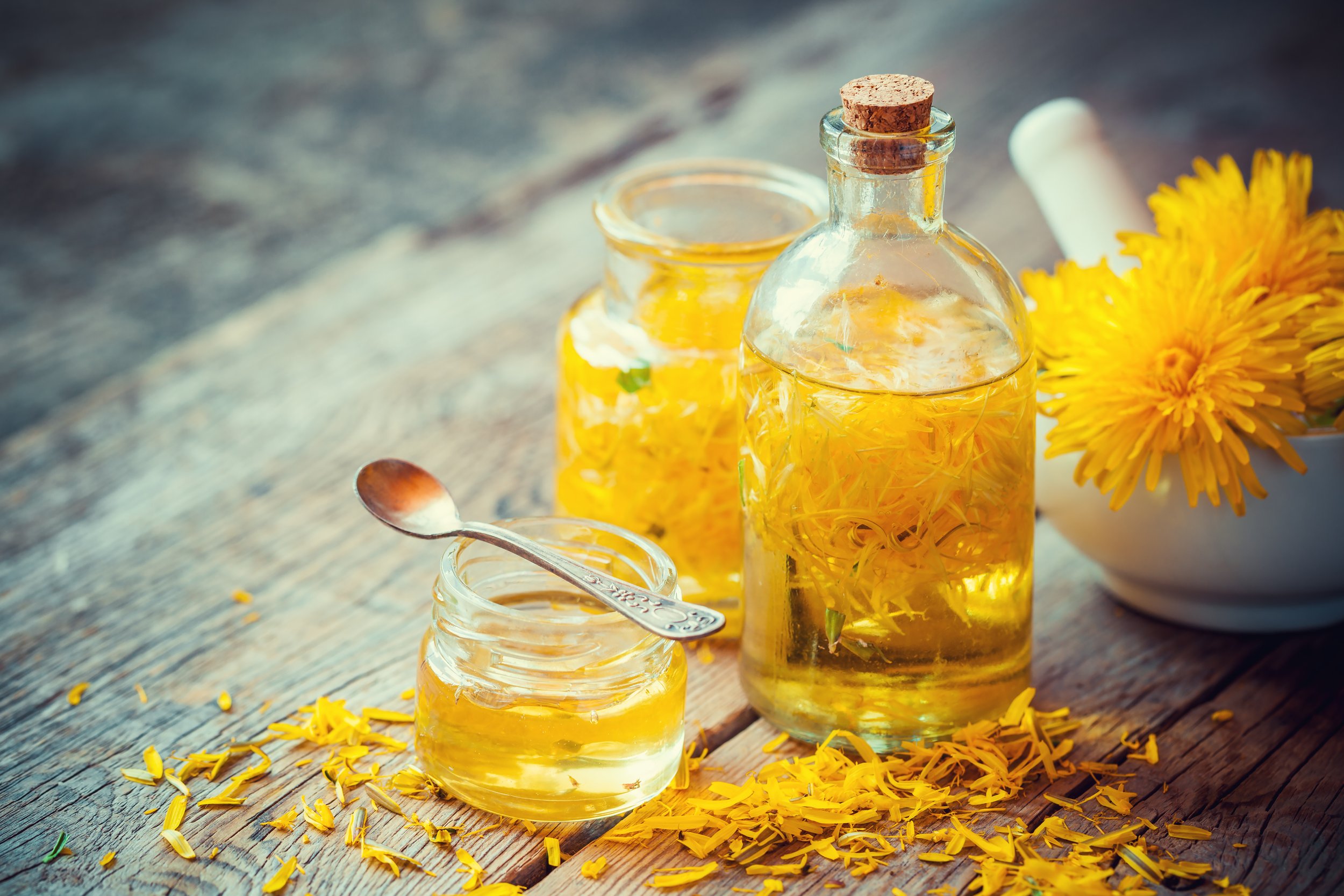DIY Spring Inspired Salad Dressings
by Sidonie Maroon, Culinary Educator
Spring salads are here, and there’s a playground of possibilities for dressing up your greens. Making homemade salad dressings is a skill you’ll be thankful for every salad forward.
Basic Vinaigrette
The vinaigrette combines oil, and an acid emulsified with the help of mustard. The traditional proportions are 1 part vinegar (or other acid such as lemon juice) to 3-4 parts oil. It’s important to taste as you combine because, for example, balsamic vinegar is sweet, so less oil is necessary, while lemon juice is more acidic and will need more oil.
Sample of Proportions
1 clove minced garlic
¼ cup balsamic vinegar
1 tablespoon Dijon mustard.
Salt and freshly ground pepper to taste
¾ cup plus 1 tablespoon extra-virgin olive oil
I like to mix vinaigrettes in a food processor to create a creamy emulsion, but whisking or shaking in a jar works. Oil and acid won’t combine by simply stirring them. If you’ve tried this, you’ll remember the disappointment. Suspend the acid in the oil by first blending everything, except oil, together. Then add the oil, in a slow thin stream, while whisking, or with the food processor running. Vinaigrettes made by machine will stay emulsified longer than a whisked or shaken one.
The variations are infinite as long as you remember the basic proportions. You can make countless dressings by adding ingredients like crumbled cheese, roasted garlic, capers, fresh ginger, herbs, chives, anchovies, citrus zest… or vary the flavor with different oils and acids. For creamy dressings like blue cheese or ranch substitute buttermilk, yogurt or sour cream for some of the vinegar.
Making my own dressings gives me the control to suit the salad to the sauce and balance it to the rest of the meal. I can also, importantly, have a say in the quality of the ingredients, especially the oils. My favorites are walnut, untoasted sesame, avocado and olive oil.
Making herb vinegar is fun. I have a jar of homemade dandelion vinegar on my counter right now, rich in minerals and bittersweet notes.
How to make dandelion vinegar
Take a quart jar and stuff it ½ full of dandelion flowers, leaves, stems and roots. Now, fill the jar with unfiltered apple cider vinegar. Make sure you push the dandelions under the vinegar or they will mold. Put a cap on, label it with the date and contents and put it in a dark, cool place. Forget about it for 6 weeks or longer. Strain and use.
Try the same technique with a mix and match of other garden or foraged herbs like nettles, parsley, thyme, raspberry leaves, tarragon, chives or chickweed.
The key element to making salad dressing is to jump in, practice, take risks, experiment and find out for yourself how to be an aficionado.
Floating Cloud Dressing
makes one cup
My rendition of a popular Tassajara Dressing, which is great with cabbage and carrots or salad greens.
¼ cup rice vinegar
¼ cup white miso
1 teaspoon grated fresh ginger
1 teaspoon wasabi paste, powder or dry mustard
1 clove garlic minced
1 teaspoon toasted sesame oil
2/3 cup sesame oil
Puree all ingredients except the sesame oil in the food processor. With the machine running, add the oil in a slow thin stream. Taste and correct as you see fit.
Caesar Dressing
Makes 1 cup
6 anchovy filets
2 soft boiled egg yolks
3 cloves garlic, chopped
1 teaspoon freshly ground black pepper
1/4 cup lemon juice
2 tablespoons sherry or red wine vinegar
1 tablespoon Dijon mustard
1/2 cup extra virgin olive oil
1/3 cup grated Parmesan cheese
Combine all ingredients in a blender or food processor, starting with anchovies and garlic—mince them, and then add everything else except the olive oil. Start the machine and slowly add the oil while running until emulsified.
I make hard-boiled eggs for the salad and take a couple of eggs out in 4 minutes to use in the dressing.
Green Goddess Dressing
makes a pint
Head Chef Philip Roemer created the original dressing at the Palace Hotel in San Francisco at the turn of the nineteenth century from a stage production of the same name. Mine takes inspiration from The Herb Farm Cookbook by Jerry Traunfield.
Don’t be afraid to try it with other fresh herbs.
1 cup (lightly packed) tarragon leaves
1 cup chive blossoms with bottoms removed or snipped chives
1 cup parsley leaves—no stems
6 anchovy filets—one 2oz tin minus the oil
Juice of one large lemon
1 teaspoon lemon zest
½ teaspoon sea salt
6 Tbsps. walnut oil or olive oil
¾ cup whole milk yogurt
Fresh ground pepper to taste on salad
Puree the herbs, anchovies, lemon juice and zest in a food processor. With the machine running, add the oil in a slow thin stream. Scrape down the sides. Add the yogurt and process until smooth.
Lebanese Tahini Dressing
Classic Lebanese style great with hot or cold veggies.
makes 1 cup
1 cup well-stirred toasted tahini
1/2 cup water
1/2 cup fresh lemon juice
Zest of lemon
2 garlic cloves, chopped
3/4 teaspoon sea salt
Pinch of ground cumin
Mince garlic in a food processor. Add the rest of the ingredients puree and until smooth. Taste to correct and balance flavors. Maybe add a little sweetener. This is also great adding some preserved lemon.






